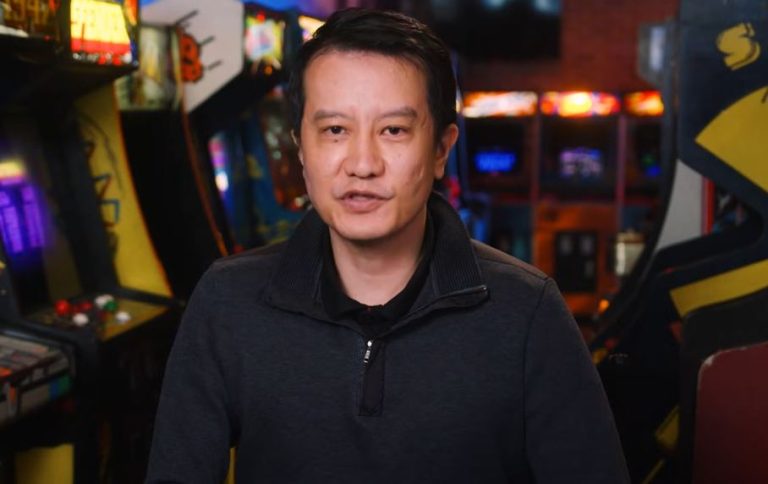Both game developers and esports enthusiasts have recently shown a renewed appreciation for Minh Le’s legacy. Minh Le, who is referred to as “Gooseman” in online communities, co-developed Counter-Strike, one of the most well-known first-person shooters ever made. Even though he has kept a low profile over the years, his financial history shows a career characterized by drive, perseverance, and creative problem-solving. Minh Le’s estimated net worth as of 2025 is $20 million, which she has amassed via her coding, creativity, and character.
Le’s story, which was born in Vietnam and brought up as a refugee in Canada, is not just one of wealth but also of the tenacity that drives extraordinary creativity. He eventually enrolled at Simon Fraser University after fleeing post-war instability with his family. He started creating game mods while experimenting with the Quake SDK during his undergraduate studies, a hobby that significantly changed the trajectory of his career.
Minh Le Net Worth: How the Creator of Counter-Strike Quietly Built a Gaming Legacy
| Name | Minh Le (aka Gooseman) |
|---|---|
| Date of Birth | June 27, 1977 |
| Nationality | Vietnamese-Canadian |
| Profession | Game Developer, Programmer, 3D Artist |
| Education | Simon Fraser University |
| Notable Projects | Counter-Strike, Tactical Intervention, Rust |
| Estimated Net Worth | $20 million (2025) |
| Career Start | 1996 |
| Past Employers | Valve, FIX Korea, Facepunch Studios, Pearl Abyss |
| Known For | Co-creating Counter-Strike |
He was introduced to a growing online community where grassroots creativity flourished by his first mod, Navy SEALs. His early design philosophy, which prioritized balance, realism, and tactical engagement over ostentatious visuals, was especially shaped by that environment. Traditional classrooms were unable to provide Minh with the hands-on mastery that his exposure to modding provided, which was particularly evident in his later works.
This setting gave rise to Counter-Strike. The project began as a Half-Life mod while Minh was still pursuing his degree in computer science. He and Jess Cliffe collaborated to release the initial beta in June 1999. Surprisingly, he was balancing gameplay, programming, and modeling while working on the game for more than 20 hours every week while still meeting academic deadlines. The pair quickly released updates, and the mod’s popularity grew much more quickly than most independent projects at the time.
Soon after, Valve intervened and offered both salaried jobs and a buyout. After transferring to the company’s development department, Minh worked on refining Counter-Strike and started working on a sequel. However, Counter-Strike 2 was eventually shelved despite its early promise. Working with the Source engine, which was still in its early stages of development, proved challenging. Minh, who is constantly looking for creative control, became disillusioned with the way large-scale corporate game development was going.
He made the decision to leave Valve in 2006. Even though it was a risky move, it demonstrated his desire to create something on his own, free from institutional restrictions. Although Tactical Intervention, his subsequent project, had a more narrative and dynamic structure, it shared thematic similarities with Counter-Strike. He spent years honing the game in South Korea after obtaining funding from FIX Korea. Even though Tactical Intervention’s 2013 launch drew mixed reviews, it was a significant turning point in his career and demonstrated his willingness to change.
After returning to Canada later that year, Minh worked as a 3D artist for Facepunch Studios on the survival game Rust, which would go on to become a huge commercial success. Despite playing a different role, he made a significant impact on the visual atmosphere of the game. His creative contributions created a rough, engrossing vibe that appealed to players all over the world.
Minh has persisted in working on smaller-scale projects over the last ten years, such as the co-op FPS Alpha Response. These initiatives may not produce numbers that make headlines, but they do showcase a design aesthetic that is especially inventive in its structure and narrative. Minh has always valued artistic freedom over substantial financial support, a stance that has influenced both his cultural capital and net worth.
His $20 million valuation stems from more than just his prior agreements with Valve or his licensing rights. It represents earnings from a variety of sources, such as consulting work, project royalties, equity stakes in independent studios, and his long-term contributions to popular games like Rust. Interestingly, he never made an attempt to capitalize on Counter-Strike’s reputation through aggressive branding or flimsy sequels. Rather, he stuck to his craft and let his creations do the talking.
His career has lasted a long time because of the emotional impact of his games. Counter-Strike was more than just a shooter game to many players; it was a social platform, a challenge to strategic thinking, and a symbol of online culture. Minh’s choice to create a game that valued cooperation and preparation over mayhem and chance proved to be incredibly successful in fostering devoted players over the long run. Modern tactical shooters like Rainbow Six: Siege, Valorant, and even more recent releases from Riot and Ubisoft have been impacted by the ripple effect.
Minh Le’s story is unique in the context of contemporary game development. Minh keeps building from a place of authenticity while others strive for multibillion-dollar valuations and franchise models. As a designer, he is incredibly dependable, often going back to the basics of fair balance, mechanical clarity, and game feel. Even in a field that frequently treats its veterans cruelly, his consistency and leadership behind the scenes have helped him stay relevant.
By means of strategic alliances and purposeful career changes, Minh has been able to sustain a consistent flow of revenue while preserving his creative autonomy. His wealth is more than just a figure; it is a testament to his decades of service, silent leadership, and unwavering dedication to doing things differently. His method is refreshing in a time when game development frequently imitates the spectacle of Hollywood.


